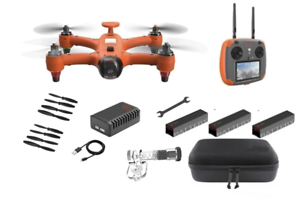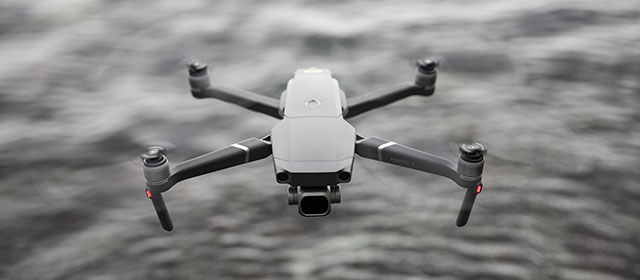
It is important to know the rules and regulations when you use a drone for fishing. You can also view instructional videos on how you can fly a drone to catch a fish. And if you're concerned about drone ethics, read our article on the subject. Here, we'll go over a few of the ethical concerns that surround the use of drones for fishing. And don't forget to check out our drone fishing gear guide.
Regulations for drone fishing
A drone fishing video for tuna may make you wonder about the regulations. While there are many reasons to adhere to local laws, safety is the most important. To protect both your life and that of the fish, you must follow the correct laws. In this article, we'll discuss some of the most important regulations and ensure you're following them. Remember to adhere to the International Game Fish Association's rules.
Drones cannot be operated over public places, including sporting events or stadiums. They cannot transport weapons or be within a distance of half a kilometer from a sporting event. Drone operators must always be able to see their aerial equipment. In addition, drones cannot fly over people, stadiums, or critical infrastructure, as well as be a distraction to emergency response vehicles. So, if you're unsure of what the rules are for using a drone to fish, check with your local law enforcement agency and consult with an attorney.

While drone law has been adopted in many states, not all states have. Illinois recently passed SB2167. The bill prohibits drones being used in state parks without permission. It also defines privacy rights and sets out the rules that drone operators must follow for both recreational and commercial purposes. Finally, it prohibits drones from interfering with hunters and other wildlife. These new laws are expected be finalized within a few years.
Ethical concerns about drone fishing
Drone fishing is controversial and not without controversy. Some companies sell underwater drones with the ability to catch fish. These drones can be used to fish for fish. The process of fishing is often captured on video. The method of removing a fish from the water is a bit different. If you are ethically concerned about this fishing method, you might consider looking elsewhere for entertainment.
Although drones are a great way to fish, some argue that they could be cheating the fishermen. Although fishing hasn't changed much in millennia over, the thrill of the chase and the capture of a fish by drones may have an impact on the sport. The use of drones can also pose a problem for conservation. Here are some of the ethical concerns that you should consider before you decide to use a drone for fishing.

Drone fishing is not a good option. It can damage the environment, and overfish endangered species. Although some states allow recreational drone fishing, others do not. There are many limitations to drone fishing. Cheap drones might lack the GPS functionality, lifting capabilities, or control range needed. If the line gets tangled, drone fishing can result in fish being lost. Piloting is also a problem.
FAQ
What US states do drones are legal in?
A drone can be legally operated for recreational purposes. The Federal Aviation Administration (FAA), established guidelines that allow individuals to fly small unmanned aircraft systems. These UASs must be registered with the FAA before they can be flown. These UASs can also be flown by commercial operators if they are allowed to fly under certain conditions.
Is it possible to fly my drone in my backyard?
Yes! These are known as UAVs (unmanned air vehicles). There are many options for drones, from small quadcopters to larger fixed-wing aircraft. The FAA has recently issued new rules regarding the commercial use of UAVs, which means you can now legally fly them for business purposes. But, it is important to note that UAVs being flown near airports can interfere with air traffic control systems. Before you operate one, you need permission from local authorities.
What are the laws around flying drones?
The Federal Aviation Administration (FAA), which regulates all aspects drone operations in the United States of America, is responsible for them. First, you need to obtain a FAA certificate in order to operate a drone commercially. After that, you must pass an exam and complete a course to learn piloting skills. The final step is to pay the fee.
Do I need to be able to fly a drone without special training?
You don't require any special training to fly your drone. A remote control unit is all you need. You also need to have some basic knowledge of flight mechanics.
Is it possible to fly my drone in a local park?
Yes, you can fly drones at parks all around the world. Due to safety concerns, certain countries don't allow you to fly drones in parks. Take a look at our list of legal places to fly drones for entertainment.
What law applies to drones that fly over private property?
The FAA has recently issued new rules for commercial drone flights. These rules only apply to UAVs less than 55 lbs and lower than 400 feet above the ground. Commercial operators need to register with the FAA in order to obtain a license. Local authorities must also approve them if they are operating near airports or in other restricted areas.
Are drones allowed to be used at public events
You can fly your drone anywhere you like, provided you adhere to the rules. If you want to fly your drone in public events like parades, festivals, concerts, etc., you must get permission from the event organizers.
Statistics
- According to industry research from ZipRecruiter , there are 10 cities where the typical salary for a Drone Pilot job is above the national average. (dronesgator.com)
- According to ZipRecruiter, the minimum hourly wage of drone pilots is $20. (thedroneu.com)
- With the top 10% making over $100/h and the bottom 10% making as low as $10/h. (dronesgator.com)
External Links
How To
How to Fly Drones with Beginners
A drone is an unmanned aerial vehicle that can be remotely controlled and used for surveillance, aerial photography, film production, research, and other hobby purposes. The technology behind drones has been around since World War II. DJI's Phantom quadcopters became commercially available in 2010. From beginner-friendly drones such as Parrot AR Drone 2.0 through professional-grade multirotor craft like DJI Mavic Pro, many types have been available.
There are several ways to fly a drone, including;
-
Remote control – This technique uses a control device attached directly to your hands that allows you steer the drone around its flight path. There are two main types of controllers: On/Off switches (like a radio) and joysticks.
-
Manual Control- This allows you to control your drone remotely via GPS coordinates. You must keep track of the location where you want the drone to go and follow the instructions from the app.
-
Autonomous Flight: This means that the drone will take care of all the piloting. It basically flies autonomously without any human intervention. To enable autonomous flight, the drone should have a built in camera and sensors capable recording images and data.
-
Triggered flight - This is similar to manual control except that the pilot sets up a preprogrammed route and the drone follows the route until it reaches its destination. Once the programmed route is completed, the drone lands automatically and returns back to the base.
-
Landing Gear - Some drones come equipped with landing gear that allows them to land safely if they lose power or run out of battery during flight.
-
Goggles – Pilots often wear goggles while flying to keep themselves safe from any debris.
-
Camera - You can capture photos and videos with your drone from the air.
-
Obstacles - Some drones can be equipped with obstacle avoidance systems that prevent them from crashing into obstacles.
-
Speed - Some drones can travel at speeds over 40 mph.
-
Battery Life: Most drones have a battery life of between 20 and 30 minutes depending on how many power sources you use.
-
Range - Depending on the model, some drones can travel up to 30 miles away.
-
Power source: Some drones will require an external power source while others can be powered by internal batteries.
-
Weight - Some drones have a weight of less than 1 pound and others weigh 4 lbs.
-
Size - Drones come in many sizes, from small gadgets that fit in one's hands to large craft that weigh more than 50 lbs.
-
Price - All drones fall within a specific price range, from high-end models that can cost thousands of dollars to lower-cost options starting at $100.